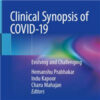No Reason to Choose Tramadol over Morphine
journals.lww.comTramadol is an opioid, but it does not bind directly to opioid receptors (or it binds so weakly that it might as well not bind at all).
Its opioid action is the result of the metabolite O-desmethyltramadol, which means it requires metabolism through the P450 enzymes to work, much like codeine. That is a problem. A significant portion of the population has no activity at the necessary enzyme (CYP2D6), so it provides no pain relief for some patients.
On the other hand, ultra-metabolizers get much higher concentrations and larger doses of the active opioid.
Instead of prescribing a known dose of an opioid, you are gambling with tramadol, and your patient is the one who could lose. This is the same reason codeine is such a horrible drug.
Complicating matters, tramadol also acts as a serotonin and norepinephrine reuptake inhibitor (SNRI), although none of its breakdown products do. What you get with tramadol is an unpredictable mix of opioid and SNRI pharmacology.

















